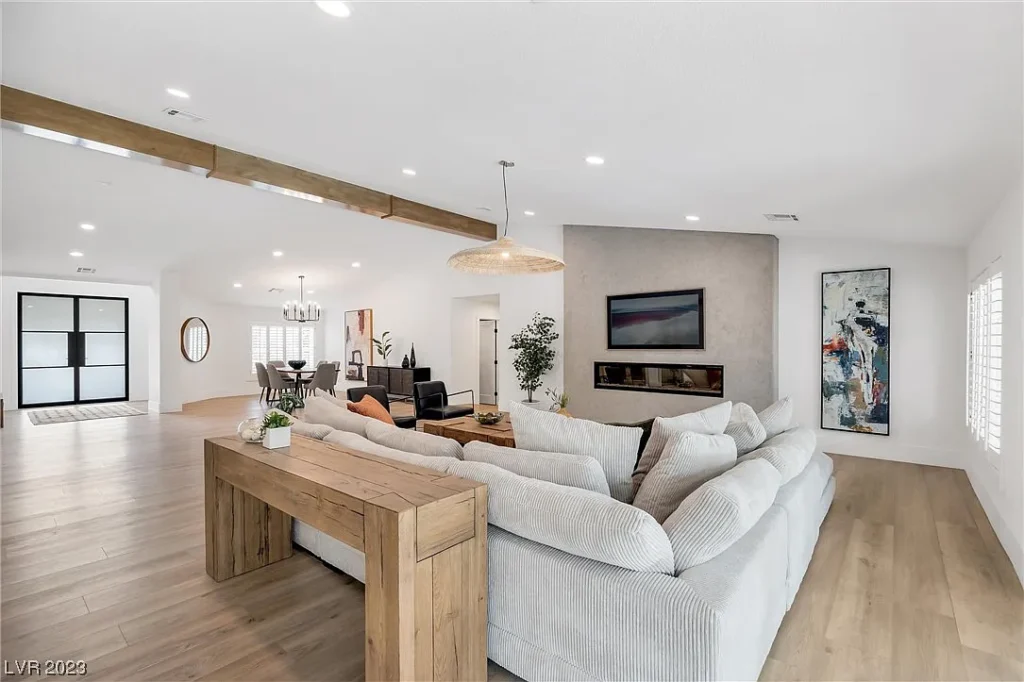When it comes to selling a home, the challenge lies in helping potential buyers envision themselves living in the space. Real estate professionals have long relied on the practice of staging, which involves strategically arranging furniture and decor to enhance a property’s appeal. However, with technological advancements, virtual staging has emerged as a digital alternative to physical staging. In this comprehensive article, we will delve into the intricate details of traditional home staging and virtual staging, examining their distinctive processes, benefits, limitations, and the impact they have on real estate listings. Marissa has connections to reputable professionals in Las Vegas to assist with staging your home for sale. Be sure to contact her for more info!
Traditional Home Staging
Traditional home staging involves physically transforming a property to create an enticing environment for potential buyers. The process typically begins with decluttering and organizing the space, allowing buyers to see the home’s full potential without distractions. Skilled staging professionals then strategically arrange furniture, paying attention to scale, flow, and focal points within each room. Neutral color palettes and tasteful decor choices are commonly employed to create a broad appeal. Thoughtful lighting and ambiance further enhance the overall atmosphere, captivating buyers as they explore the property.
The benefits of traditional home staging are numerous. By creating an emotional connection, staging helps buyers envision themselves living in the home, facilitating a sense of ownership. Staging also highlights the property’s potential, allowing buyers to see how each room can be utilized. This increases the perceived value of the home and provides a competitive edge in the market. Furthermore, staging results in aesthetically pleasing listing photos and marketing materials, drawing more attention to the property. (Side note: My personal favorite home staging pros are Belle Chambré. Check out their work on their website and their Instagram!)
However, traditional home staging has its drawbacks. The cost and time involved can be significant, particularly for larger properties. Additionally, staging professionals may have limited availability, causing logistical challenges for sellers. Moreover, personal preferences and clashes in decorating styles can arise when collaborating with staging professionals, potentially diminishing the appeal of the staged home.
Virtual Staging
Virtual staging is a digital process that transforms empty or sparsely furnished properties into visually appealing spaces using computer-generated imagery. With virtual staging, 3D rendering and image manipulation software are utilized to add furniture, decor, and other elements to photographs of the property. This technique offers a range of customization options, including furniture selection, placement, and even virtual renovations such as paint color changes. Virtual tours and interactive features can also be incorporated to provide a more immersive experience for potential buyers.
One of the primary advantages of virtual staging is its cost-effectiveness and time efficiency. Without the need to physically move furniture or decorate each room, sellers can save on expenses and reduce the time it takes to prepare a property for listing. Virtual staging also allows for creative flexibility, enabling customization to cater to various buyer preferences. The digital nature of virtual staging facilitates broader reach and potential buyer engagement, as listings can be easily shared online and viewed from anywhere. Additionally, virtual staging enhances the overall online presence and marketing efforts, increasing click-through rates and attracting more virtual showings. (Some of the best virtual staging in Las Vegas is done by Avia Media Group. Visit the website, Instagram page and download our app to order!)

Nevertheless, virtual staging has its limitations. As it relies solely on digital representation, potential buyers miss out on the physical interaction and tactile experience that traditional staging provides. There is a risk of misleading expectations if the virtual staging does not accurately reflect the actual state of the property. Ethical considerations also come into play, as virtual staging has the potential for misrepresentation, making it crucial to maintain transparency and honesty in the marketing process.
Impact on Real Estate Listings
Both traditional staging and virtual staging have a significant impact on real estate listings, influencing buyer perception, online presence, and sale potential. Visual representation is a powerful tool, and staging, in any form, helps buyers connect emotionally with the property. By presenting a home in its best light, staging creates a more inviting atmosphere that encourages buyers to envision themselves living in the space.
In today’s digital age, online presence is crucial. Listings with high-quality, visually appealing photographs stand out and attract more attention. Staged properties, whether traditionally or virtually, increase click-through rates and generate more virtual showings. Integrating virtual staging with social media marketing strategies can further enhance a property’s online visibility.
The impact of staging on the sale potential of a property cannot be overlooked. Comparative analyses have shown that staged properties often are perceived as more desirable by potential buyers. Additionally, staged homes tend to spend less time on the market and achieve higher sale prices compared to non-staged counterparts.
Finding the Right Approach
To determine the best approach for staging a property, several factors should be considered. Understanding the property type and target audience is crucial in making informed staging choices. Different demographics and preferences may influence the decision between traditional or virtual staging.
Cost considerations and budget allocation play a significant role in the decision-making process. Traditional staging typically involves higher costs due to the need to rent or purchase furniture and decor items. Virtual staging offers more flexibility and scalability, allowing sellers to choose the level of customization that suits their budget.
Collaborating with professionals experienced in staging or virtual staging is highly recommended to achieve optimal results. Staging professionals possess the expertise to transform a property effectively, while virtual staging experts have the technical skills to create stunning virtual representations. Care should be taken to choose reputable providers who can deliver high-quality results.
In the competitive real estate market, capturing the attention of potential buyers is paramount. Both traditional staging and virtual staging offer unique advantages and considerations. Traditional staging creates a physical experience, evoking emotions and enhancing buyer visualization. Virtual staging, on the other hand, provides a cost-effective and customizable alternative, leveraging technology to reach a wider audience. Each approach has its drawbacks and limitations, impacting buyer perception, online presence, and sale potential. By understanding the differences and carefully considering factors such as property type, target audience, and budget constraints, sellers can make informed decisions about which staging method to employ. Ultimately, the goal is to create a compelling and visually appealing listing that captures buyers’ imaginations and leads to a successful sale. When you’re ready to sell your property, be sure to contact Marissa so you can collaborate on a successful transaction.


